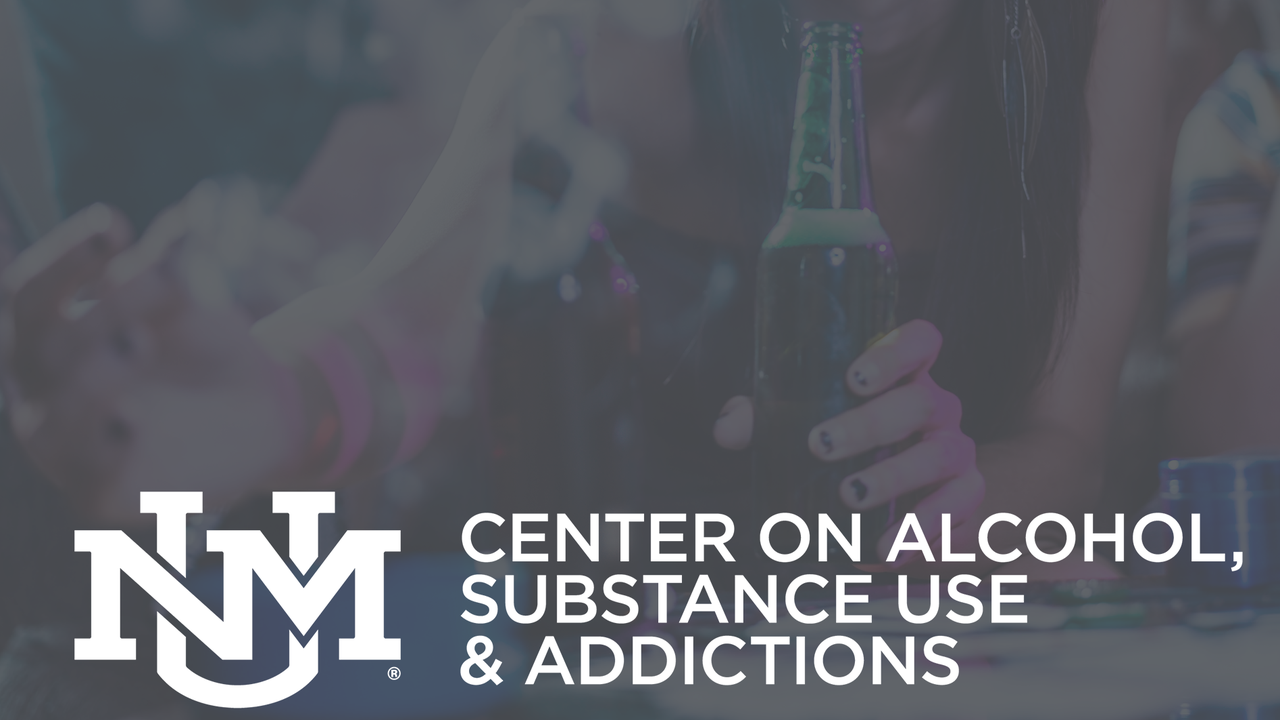Peer pressure vs. self-motivation: CASAA researches substance use choices
December 12, 2023 - By Savannah Peat

When someone gets pulled over while driving under the influence, officers, friends and family don’t fully understand the why–why did this person think they could drive while high or drunk?
The motivation behind safe and unsafe decision-making when it comes to consuming substances is something UNM’s Center on Alcohol, Substance Use And Addictions’ (CASAA’s) Research Assistant Professor Dylan Richards is exploring with college-aged students.
Richards was recently published in the Experimental and Clinical Psychopharmacology and Addictive Behaviors for his application of an innovative theory on motivations for cannabis and alcohol behaviors.
“The literature focuses a lot on reasons why people drink, which we refer to as drinking motives. These are well studied. They've been around for decades. There's a ton of research on this, but this new sort of research has emerged on harm reduction behaviors for both alcohol and cannabis is what I’m focusing on,” Richards said.
Since ages 18 to 22 are pre-established peaks for cannabis and alcohol consumption, Richards began using data and surveys from 10 universities in the U.S., to analyze drinking motives, responsible drinking motives and drinking-related outcomes.
“These are behaviors that reduce the harms that people experience from drinking or using cannabis. There's not been a lot of research on why people use those behaviors,” he said. “I thought, to better understand these integrated behaviors, both drinking and drinking responsibly, using cannabis and using cannabis responsibly, how can we better understand what motivates people to use those harm reduction behaviors?”
Richards went into this knowing the reason people choose to drink does play a role in the amount that they consume and related consequences. He wanted to see what plays a role in reducing those consequences through protective behavioral strategies, such as finding a designated driver, not going out with strangers and switching between alcoholic and non-alcoholic drinks.
“This includes setting a drink limit or leaving the bar party at a predetermined time. Does this framework of motivation predict those outcomes beyond those drinking motives that we already know quite a bit about?” Richards asked.
While the concept of peer pressure is something attributable to consuming substances, one’s autonomy is what comes to stopping.
This is based on self-determination theory.
“What that framework proposes is motivation is not this thing that just varies in quantity– you’re either not motivated or a little motivated or very motivated to do something,” he said. “This framework says that there's actually qualitatively distinct types of motivation that vary in the degree to which they're autonomous; the more autonomous your reason for doing something, the better the behavioral outcome.”
In the results, he found autonomous motivations for drinking responsibly were what primarily led to those protective behavioral strategies.
“More autonomous motivations can happen because you believe the behavior is important and because it aligns with who you are. What we're finding is, especially for those harm reduction behaviors, these types of motivation that vary in autonomy, they do explain additional variability in these outcomes, which provides evidence for its utility,” Richards said.
Autonomy, he also found, resides on a spectrum.
“As you move up in the spectrum of autonomy, it becomes more and more positively associated with healthy behaviors. We do simultaneously look at these different types of motives and find that autonomous motivation is good. It's associated with more frequent use of harm reduction behaviors,” Richards said.
Richards believes this shows that including motivation as a factor in not just what causes people to drink, but drink responsibly may lead to a better understanding of alcohol-related behaviors as a whole.
“You're more likely to do something that you want to do as opposed to if you feel forced to do it, so I'm applying that framework to understand why people engage in these harm reduction behaviors for substance use,” he said. “We do see the opposite pattern of relationships for those less autonomous types of motivation; a lack of intent is intuitively associated with using these harm reduction behaviors less frequently.”
There was also plenty to learn when it came to those responsible motivations for alcohol and cannabis. While there is little known about self-motivated protective strategies, there is even less known when looking at both substances.
“We know that use of both of these substances puts people more at risk,” Richards said. “There's these independent lines of research looking at harm reduction for alcohol and harm reduction for cannabis, but how do we start to understand the simultaneous use of these harm reduction behaviors?”
In this case, Richards still analyzed college-aged populations. It’s important, he emphasizes, to understand this is an objectively at-risk group for negative consequences involving cannabis and alcohol. Richards found four groups of concurrent alcohol and cannabis users based on their use of harm-reduction behaviors.
“Are there people who use both substances relatively safely? Are there people who use neither substance relatively safely, and are there sort of differing combinations?” he asked.

For most groups, their use of harm-reduction behaviors for alcohol was similar to their use of harm-reduction behaviors for cannabis, and vice versa. More interestingly, however, was that one group was relatively protective with their alcohol consumption but did not hold the same amount of precaution when it came to cannabis consumption.
“I think that's interesting and warrants some follow-up. There is some work suggesting that people perceive cannabis to be less risky than alcohol,” Richards said. “Is that why this group is emerging? People think it's important to use alcohol responsibly, but maybe because they perceive cannabis to be less risky, they don't think it's as important to use cannabis responsibly, so I think we need a follow-up with that line of thinking.”
Understanding that is a step towards helping associated negative consequences among college students, as well as generating interventions that can be implemented to promote autonomy.
“These harm reduction behaviors are very teachable things. As part of our interventions, we can inform people about these different behaviors that they can use. These are very teachable, doable behaviors that we can include in our interventions,“ Richards said.
There’s still plenty Richards aims to uncover. He does know still, that there’s a distinct decision college students must make in order to stay safe while drinking; they can’t just rely on others or the environment around them.
“We're finding support for this framework of motivation we're working on to create better measures of these motivations for harm reduction behaviors. Motivation is on this spectrum of autonomy and we need to look at progression across that continuum,” he said.
Learn more about how CASAA is working to assist in healthy habits at the Center on Alcohol, Substance Use And Addictions.
